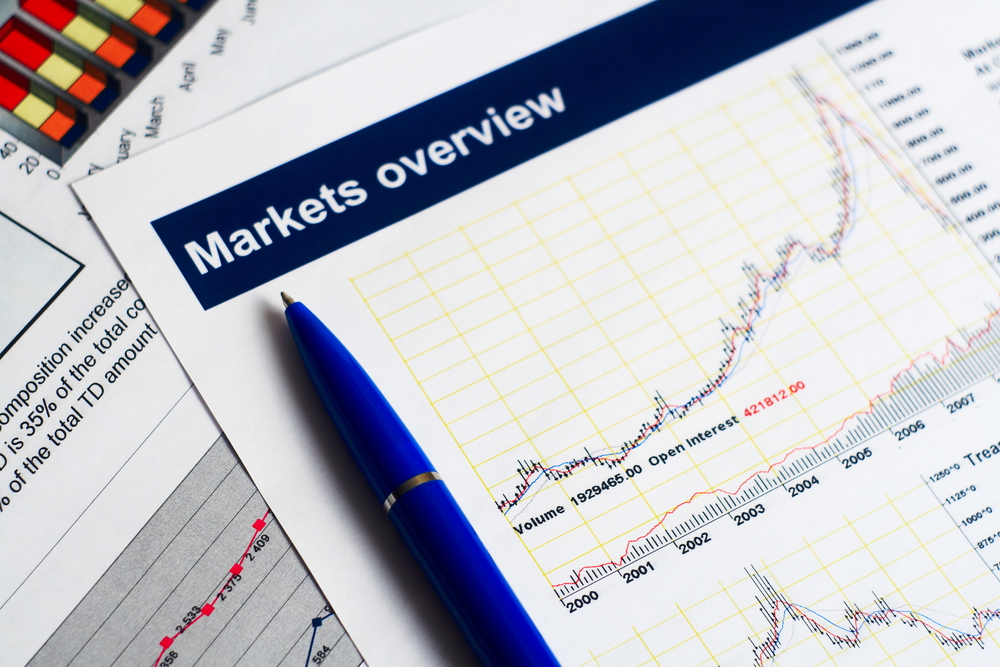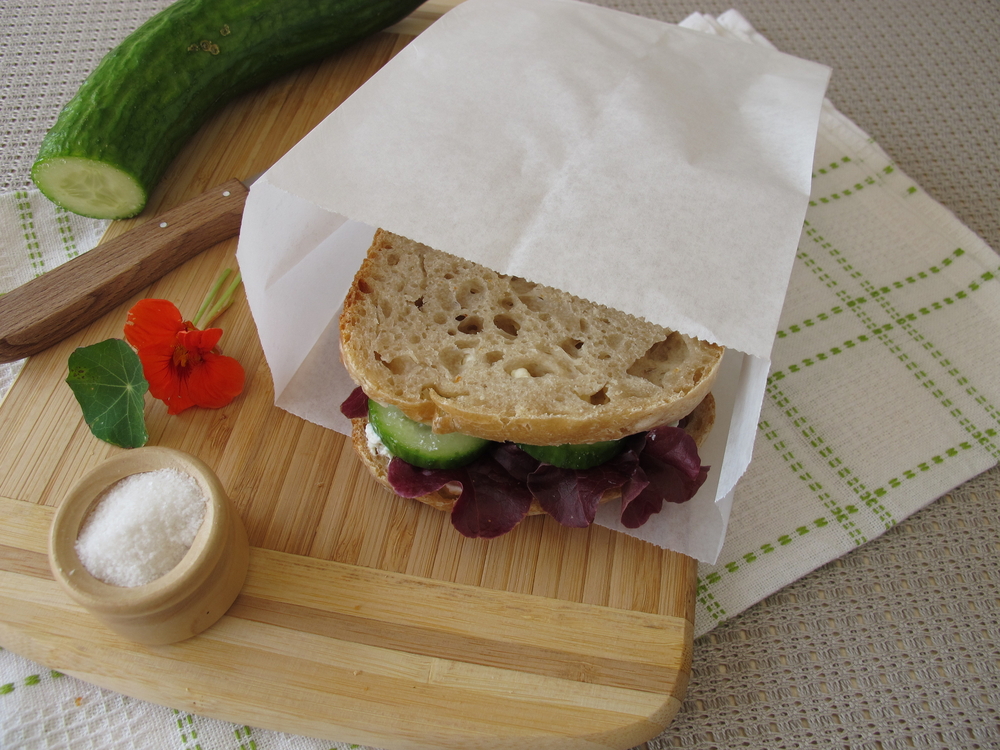The Market of Greaseproof Paper: Key Trends and Growth Forecast
By Elsa Vogelbach · 25. July 2024
The market of greaseproof paper is poised for significant expansion, driven by increasing demand in the food packaging and baking sectors.
From a valuation of USD 915.5 million in 2021, it is set to reach USD 1346.51 million by 2031, growing at a CAGR (Compound Annual Growth Rate) of 3.9%.
This rise is fueled by its non-stick, grease-resistant qualities and the shift towards sustainable packaging solutions.
Our analysis covers market trends, key growth drivers, challenges, and future forecasts.
Key Takeaways
- The global greaseproof paper market, valued at USD 915.5 million in 2021, is projected to reach USD 1346.51 million by 2031, driven by rising demand in the food packaging and baking sectors. 🌟
- Sustainability is a significant growth driver, with increasing consumer preference for eco-friendly packaging solutions and stringent regulations limiting the use of plastics bolstering the market. 🌍
- Challenges in the market include limitations in baking applications due to heat resistance issues, competition from alternative materials like nanocellulose films, and the impact of COVID-19 on supply chains.
Market Overview
 greaseproof paper market
greaseproof paper market
Over the past few years, the global greaseproof paper market has grown significantly.
With a value of USD 915.5 million in 2021, projections show it reaching USD 1346.51 million by 2031, marking a sturdy CAGR of 3.9%.
This growth trajectory is fueled by the rising demand in food packaging and baking sectors, where greaseproof paper’s non-stick and grease-resistant properties are highly valued.
The COVID-19 pandemic had a notable impact on the market, causing a slight dip in growth.
However, the market quickly rebounded, with the greaseproof paper market size expected to be worth USD 954.2 million in 2024.
The pandemic underscored the importance of hygiene and safety in food packaging, further driving demand for greaseproof paper.
This recovery and subsequent growth highlight the market’s resilience and the increasing importance of sustainable packaging solutions.
Key Drivers of Market Growth
The growth of the greaseproof paper market is propelled by several factors, including:
- Cost-effectiveness 💸
- Suitability for food contact 🍔
- Reliable and affordable solution for food packaging
- Ensuring that food items remain uncontaminated and fresh 🥗
- Maintaining food safety standards in the food packaging industry 🛡️
Shifting consumer preferences towards eco-friendly packaging solutions also play a role.
With increasing awareness of environmental issues, there is a growing demand for sustainable packaging materials. Greaseproof paper, being biodegradable and often produced without harmful chemicals, fits well into this eco-friendly narrative.
Stringent regulations limiting the use of plastics and pushing towards perfluorocarbon-free systems further boost the demand for greaseproof paper. 🌱
Technological advancements in the cooking or food packaging industry are another significant driver.
Innovations in greaseproof paper manufacturing have led to improved product performance, making it more resistant to oil and grease.
Additionally, the post-pandemic surge in online home food delivery has increased the demand for efficient and safe food packaging solutions, further propelling market growth. 📦
Challenges and Restraints
Even with its numerous advantages, the greaseproof paper market is not without challenges.
One of the primary limitations is in baking applications.
Greaseproof paper is not suitable for all types of baking, such as cake tin lining, where it may need to be greased on both sides to avoid sticking.
Additionally, it is only heat-resistant up to a certain temperature, limiting its use in high-temperature baking.
Competition from alternative materials also poses a significant challenge. Nanocellulose films, for example, offer similar greaseproof properties but require protection from moisture to maintain their effectiveness.
Furthermore, the use of fluorochemicals in some greaseproof papers, which can migrate into food and end up in municipal wastewater sludge, raises health and environmental concerns.
The impact of COVID-19 on supply chains has also been a restraint, highlighting vulnerabilities in the market’s logistics and distribution networks. 🚚
Product Segmentation and Competitive Landscape
 cucumber and sandwich in greaseproof paper bag
cucumber and sandwich in greaseproof paper bag
Product types and geographical zones are the primary segments of the greaseproof paper market.
The main product types include packaging greaseproof paper and baking paper.
Packaging greaseproof paper accounted for the largest revenue share in 2020, driven by its extensive use in the food packaging sector.
This segment’s dominance is expected to continue given the increasing demand for sustainable and effective food packaging solutions.
The competitive landscape of the greaseproof paper market features several key players who are actively engaged in research and development, product advancements, and strategic alliances.
This competitive analysis highlights the dynamic nature of the market and the importance of staying ahead through continuous innovation and strategic collaborations. 🤝
Product Types
Packaging greaseproof paper, characterized by its very low porosity, is the dominant product type in the market.
It is widely used in wrapping fatty foodstuffs like butter and various other food items, ensuring they remain fresh and uncontaminated.
This segment’s dominance is driven by its extensive application in the food packaging sector, where maintaining the integrity and hygiene of food products is crucial.
Custom printed greaseproof paper is another significant product type, utilized for branding and advertising purposes.
By incorporating printed graphics and vibrant colour combinations, businesses can enhance customer appeal and create a memorable dining experience.
This innovative use of greaseproof paper not only serves practical purposes but also adds a marketing dimension, helping brands stand out in a competitive market.
Application Insights
 © Limepack Greaseproof Paper for packing burger
© Limepack Greaseproof Paper for packing burger
Both commercial and residential settings see extensive use of greaseproof paper.
In commercial settings, it is widely used for food packaging and baking applications, driven by concerns for hygiene and safety.
Residential applications have also seen significant growth, influenced by rising consumer awareness of food hygiene and safety.
These non-stick properties and ease of clean-up make greaseproof paper a preferred choice for various culinary activities in homes and commercial kitchens alike. 🍴
Commercial Use
Primarily powered by the food packaging industry, the commercial sector is the leading segment in the greaseproof paper market.
Greaseproof paper is extensively used for wrapping items like burgers, sandwiches, cookies, and chips, providing an efficient solution to prevent content contamination and extend shelf life.
Its superior resistance to oil and grease makes it indispensable in the food service industry and bakery sector.
In commercial kitchens, greaseproof paper streamlines cooking processes and maintains cleanliness, enhancing operational efficiency and hygiene.
This sector is anticipated to dominate the market through 2031, reflecting its critical role in food service establishments.
Residential Use
Increasing consumer awareness about food hygiene and safety is driving an uptick in residential use of greaseproof paper.
Consumers are adopting greaseproof paper for wrapping and storing food products like cheese and cold cuts, reflecting a growing concern for maintaining food hygiene at home. 🧀
Greaseproof paper, including greaseproof paper sheets, is a popular choice for baking cookies, roasting vegetables, and grilling meats, as it reduces the need for excessive oil or butter, contributing to healthier cooking practices.
This trend towards more home-based culinary activities is expected to continue, further boosting the residential segment of the paper stock market.
Regional Market Analysis
The global greaseproof paper market’s detailed regional analysis encompasses:
- North America
- Europe
- Asia Pacific
- Latin America
- The Middle East
- Africa
Each region presents unique market dynamics influenced by local consumer preferences, regulatory frameworks, and economic conditions.
Europe and North America are expected to register significant revenue growth, driven by stringent environmental regulations and high demand from the food packaging industry, which is a part of the food and beverage sector.
North America
Owing to high demand from the food packaging industry, North America boasts the largest market share in the global greaseproof paper market.
The adoption of advanced technologies in this region is also a significant growth driver.
The United States, in particular, is a major contributor, with a notable market share and expected continued growth.
Major industry leaders in North America are playing a crucial role in market growth by continuously innovating and expanding their product offerings.
The steady growth rate in North America is further supported by the increasing demand from the baking sector.
This region’s focus on maintaining high food safety standards and adopting eco-friendly packaging solutions positions it as a key player in the global market. 🏆
Europe
Strict environmental regulations promoting sustainable packaging solutions significantly shape Europe’s greaseproof paper market.
Consumer preferences in this region are shifting towards eco-friendly and biodegradable food packaging, driving market growth.
Countries like Germany are projected to reach a significant market size in the greaseproof paper sector by 2030, reflecting the region’s commitment to sustainability.
The market dynamics in Europe are shaped by a strong regulatory framework that encourages the use of sustainable materials.
This emphasis on environmental responsibility is a key driver for the adoption of greaseproof paper, making Europe a critical region for market expansion. 🌱
Asia Pacific
Factors like rising population, strengthening economy, and escalating health awareness are driving significant market growth in the Asia Pacific region.
Key markets like China and India are at the forefront of this growth, with substantial demand for greaseproof paper in the food packaging and baking sectors.
Japan and South Korea are also witnessing substantial growth rates, contributing to the overall market expansion in the region.
The greaseproof paper market in the Asia Pacific is estimated to grow significantly from 2023 to 2030, reflecting the region’s economic development and increasing consumer awareness of food hygiene and safety.
This growth presents lucrative opportunities for investors and manufacturers looking to expand their presence in this dynamic market. 📈
Latin America, Middle East, and Africa
Potential growth opportunities for the greaseproof paper market are emerging in Latin America and the Middle East.
Countries like Brazil and Argentina are showing promising signs of increased investment in the greaseproof paper sector.
The growing middle class and increasing disposable income in these regions are driving demand for convenient and hygienic food packaging solutions.
In the Middle East and Africa, countries such as South Africa and Saudi Arabia offer significant growth prospects.
These regions are witnessing a rise in health awareness and a shift towards sustainable packaging solutions.
The potential for market expansion in these areas is substantial, making them attractive destinations for new investments and business ventures.
Historical and Forecast Data
Increasing demand in the food packaging and baking sectors propelled steady growth in the global greaseproof paper market from 2018 to 2023.
In 2021, the market was valued at USD 915.5 million.
This historical data underscores the market’s resilience and its ability to adapt to changing consumer preferences and regulatory requirements.
Projections show the market expanding at a CAGR (Compound Annual Growth Rate) of 3.9% from 2024 to 2031, with an expected value of USD 1346.51 million by the latter year.
Key trends expected to shape the forecast period include the rising adoption of eco-friendly and sustainable packaging solutions, along with technological advancements in greaseproof paper manufacturing.
This projected growth highlights the market’s potential and the opportunities it presents for stakeholders.
Historical Data (2018-2023)
From 2018 to 2023, the global greaseproof paper market experienced steady growth, driven by robust demand from the food packaging and baking sectors.
The market size was valued at USD 915.5 million in 2021.
This period of growth reflects the market’s capacity to meet evolving consumer needs and adapt to regulatory changes.
Forecast Data (2024-2031)
The forecast for the greaseproof paper market from 2024 to 2031 is promising, with an expected CAGR of 3.9%.
The market size is projected to reach USD 1346.51 million by 2031, driven by the increasing adoption of sustainable packaging solutions and technological advancements in manufacturing processes.
This growth trajectory indicates a bright future for the market, with numerous opportunities for innovation and expansion.
Industry Trends and Innovations
Several key trends and innovations are currently shaping the future of the greaseproof paper industry.
Some of these trends include:
- Rising concerns about sustainability, leading to a significant focus on developing eco-friendly packaging materials 🌿
- Certification for producing specialty products that can biodegrade in both industrial and home compost settings
- The trend towards sustainable packaging as a major driver for the industry’s growth
Technological advancements are also playing a crucial role in the market. Innovations in greaseproof paper production, such as the use of starches, alginates, or CMC (Carboxy Methyl Cellulose) to treat the paper, are enhancing its grease-resistant properties.
Companies are launching new product ranges to cater to the North American market, indicating a continuous effort to meet evolving consumer demands and regulatory standards.
These innovations and trends are pivotal in maintaining the market’s competitive edge. 🚀
Strategic Insights for Stakeholders
To gain a competitive edge, stakeholders in the greaseproof paper market must emphasize product innovation and sustainability.
Addressing consumer demand for eco-friendly packaging through technological advancements in manufacturing processes can be a key growth strategy.
This approach not only meets regulatory requirements but also aligns with the growing consumer preference for sustainable products.
Building a robust distribution network and ensuring regulatory compliance are equally important for market success.
Global recovery trends and increasing investor confidence, particularly in regions like Europe, present numerous opportunities for stakeholders to expand their market presence and drive growth.
These strategic insights highlight the importance of innovation, sustainability, and effective distribution in achieving long-term success in the greaseproof paper market. 🌟
Summary
In conclusion, the greaseproof paper market is on a strong growth trajectory, driven by increasing demand in the food packaging and baking sectors.
The market’s resilience and adaptability to changing consumer preferences and regulatory landscapes underscore its potential.
Key drivers of growth include cost-effectiveness, safety for food contact, and a shift towards eco-friendly packaging solutions.
As we look to the future, stakeholders must focus on product innovation, sustainability, and building robust distribution networks to succeed in this dynamic market.
The opportunities presented by technological advancements and regional market growth are immense.
By leveraging these insights, stakeholders can navigate the challenges and capitalize on the market’s potential, ensuring continued growth and success in the greaseproof paper industry.
Frequently Asked Questions
What is driving the growth of the greaseproof paper market?
The growth of the greaseproof paper market is being driven by increasing demand in food packaging and baking, consumer preference for eco-friendly packaging, and technological advancements in manufacturing processes. These factors are fueling the market’s expansion.
What are the main challenges facing the greaseproof paper market?
The main challenges facing the greaseproof paper market include limitations in baking applications, competition from alternative materials, and supply chain disruptions due to COVID-19. Today’s market is facing these significant challenges.
What are the key trends shaping the greaseproof paper market?
The key trends shaping the greaseproof paper market include a focus on sustainability, technological advancements in manufacturing processes, and innovations in greaseproof paper production. These factors are driving significant changes in the industry.
Which regions are expected to see significant growth in the greaseproof paper market?
Significant growth in the greaseproof paper market is expected in North America and Europe due to high demand from the food packaging industry and stringent environmental regulations. This is particularly expected to occur in the near future.

